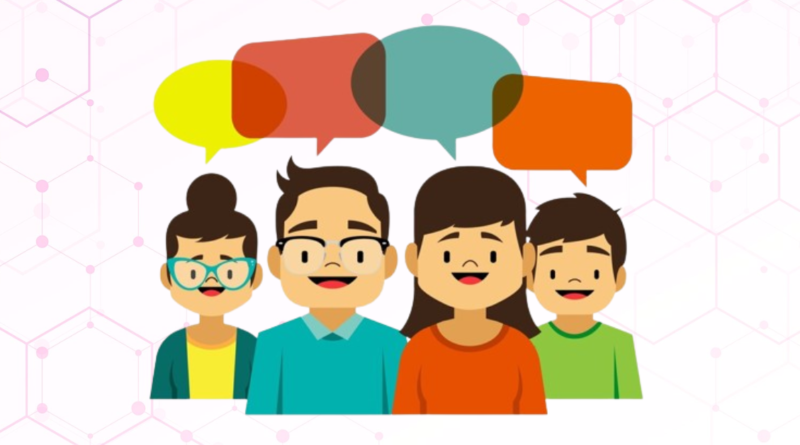10 Types of Nonverbal Communication and Real-life Examples
In the vast tapestry of human communication, words are but one thread in the intricate weave of expression. Beyond the spoken or written language lies a realm rich with nuanced cues that convey emotions, intentions, and unspoken narratives. This hidden language, known as nonverbal communication, forms an essential component of our daily interactions, often revealing more than words alone can express. In this exploration, we embark on a journey into the fascinating world of nonverbal communication, dissecting its significance and unraveling the tapestry of ten distinct types of nonverbal cues. From the subtle nuances of facial expressions to the unspoken eloquence of body language, we delve into real-life examples to decipher the silent symphony that shapes our understanding of the messages that surround us. Join us as we decode the unspoken and illuminate the profound impact of nonverbal communication on the intricate dance of human connection.
What is Nonverbal Communication?
Nonverbal communication refers to the transmission of messages without the use of spoken or written words. It encompasses a wide range of cues, both intentional and unintentional, that enhance or contradict verbal communication. Understanding these cues is essential for effective interpersonal communication, as they can provide insight into emotions, attitudes, and intentions.
The 10 Types of Nonverbal Communication
The spectrum of human communication extends far beyond the spoken or written word. Nonverbal communication, a diverse and subtle language in itself, encompasses a myriad of cues that enrich and, at times, complicate the messages we convey. Let’s delve into the 10 primary types of nonverbal communication, each offering a unique lens through which we interpret and express meaning in our interactions.
1. Facial Expressions
Facial expressions are powerful indicators of emotions. A smile can convey happiness, while a furrowed brow might signal confusion or concern. Consider a job interview where a candidate’s genuine smile expresses enthusiasm and confidence.
2. Body Language
Body language includes gestures, posture, and movements. A person leaning forward might indicate interest, while crossed arms could suggest defensiveness or discomfort. In a negotiation setting, open and relaxed body language can foster trust and cooperation.
3. Eye Contact
Eye contact is a vital nonverbal cue that can convey sincerity, attentiveness, or even deception. In a conversation, maintaining appropriate eye contact shows engagement and interest, while avoiding it may suggest discomfort or dishonesty.
4. Gestures
Hand movements and gestures can emphasize or complement verbal messages. For instance, a thumbs-up gesture communicates approval or agreement, while a pointing finger directs attention. In a multicultural setting, being aware of cultural differences in gestures is crucial to avoid misunderstandings.
5. Posture
Posture reflects one’s level of confidence, authority, or submission. Consider a manager addressing their team with an upright and open posture, projecting confidence and approachability. Conversely, a slouched posture may convey a lack of interest or self-assurance.
6. Proxemics
Proxemics refers to the use of personal space in communication. Different cultures have varying norms regarding personal space, influencing comfort levels. In a crowded public transport setting, individuals may adjust their proxemics to navigate the shared space without causing discomfort.
7. Touch
Touch is a powerful form of nonverbal communication, conveying emotions ranging from comfort to aggression. A comforting pat on the back during a challenging moment can provide support, while an unwelcome touch may provoke discomfort or offense.
8. Paralinguistics
Paralinguistics involves the vocal elements of speech, such as tone, pitch, and speed. A friendly and upbeat tone can enhance a positive message, while a monotone voice may convey boredom or lack of enthusiasm.
9. Appearance
Personal appearance, including clothing and grooming, contributes to nonverbal communication. In professional settings, dressing appropriately can convey competence and professionalism, while a casual appearance might be suitable for a more relaxed environment.
10. Silence
Silence can be a powerful nonverbal cue, indicating contemplation, discomfort, or agreement. During a negotiation, a thoughtful pause can signal that a decision is being considered, while an awkward silence may suggest tension or disagreement.
Real-life Examples
Let’s explore these nonverbal cues in action through real-life scenarios:
1. Job Interview
In a job interview, the candidate’s facial expressions, body language, and eye contact all play crucial roles. A firm handshake and maintaining eye contact convey confidence while fidgeting or avoiding eye contact may raise concerns.
2. Cross-Cultural Meeting
During an international business meeting, participants must be mindful of cultural differences in gestures and proxemics. A gesture that is acceptable in one culture might be offensive in another, and understanding these nuances promotes effective communication.
3. Conflict Resolution
In a conflict resolution session, open and non-threatening body language can help defuse tension. Mirroring the other person’s gestures and maintaining a calm tone contribute to a positive atmosphere, fostering better understanding and resolution.
Conclusion
Nonverbal communication is an intricate and integral aspect of human interaction. Understanding and interpreting these cues can significantly enhance communication effectiveness. From job interviews to international negotiations, being attuned to nonverbal signals allows individuals to navigate various social situations with finesse. As we continue to explore and appreciate the nuances of nonverbal communication, we gain valuable insights into the unspoken language that shapes our everyday interactions.




